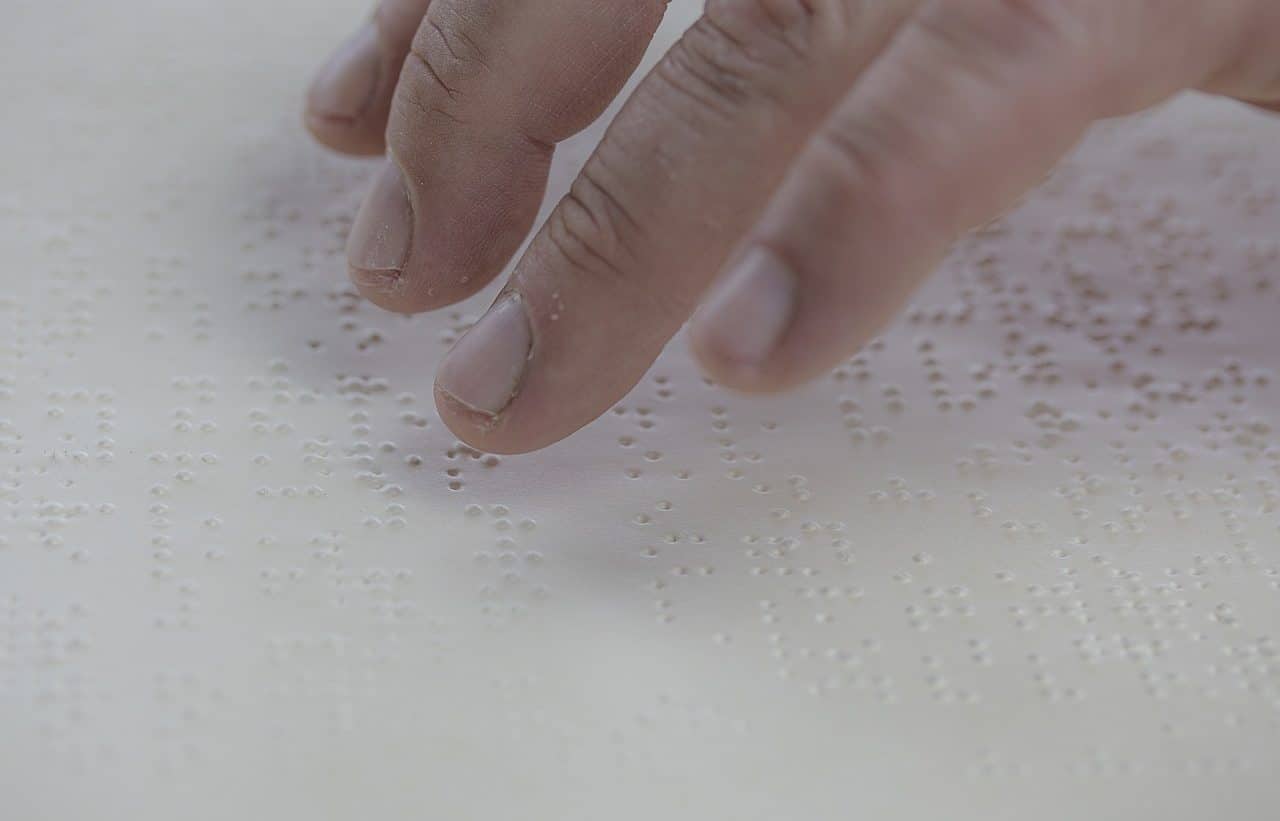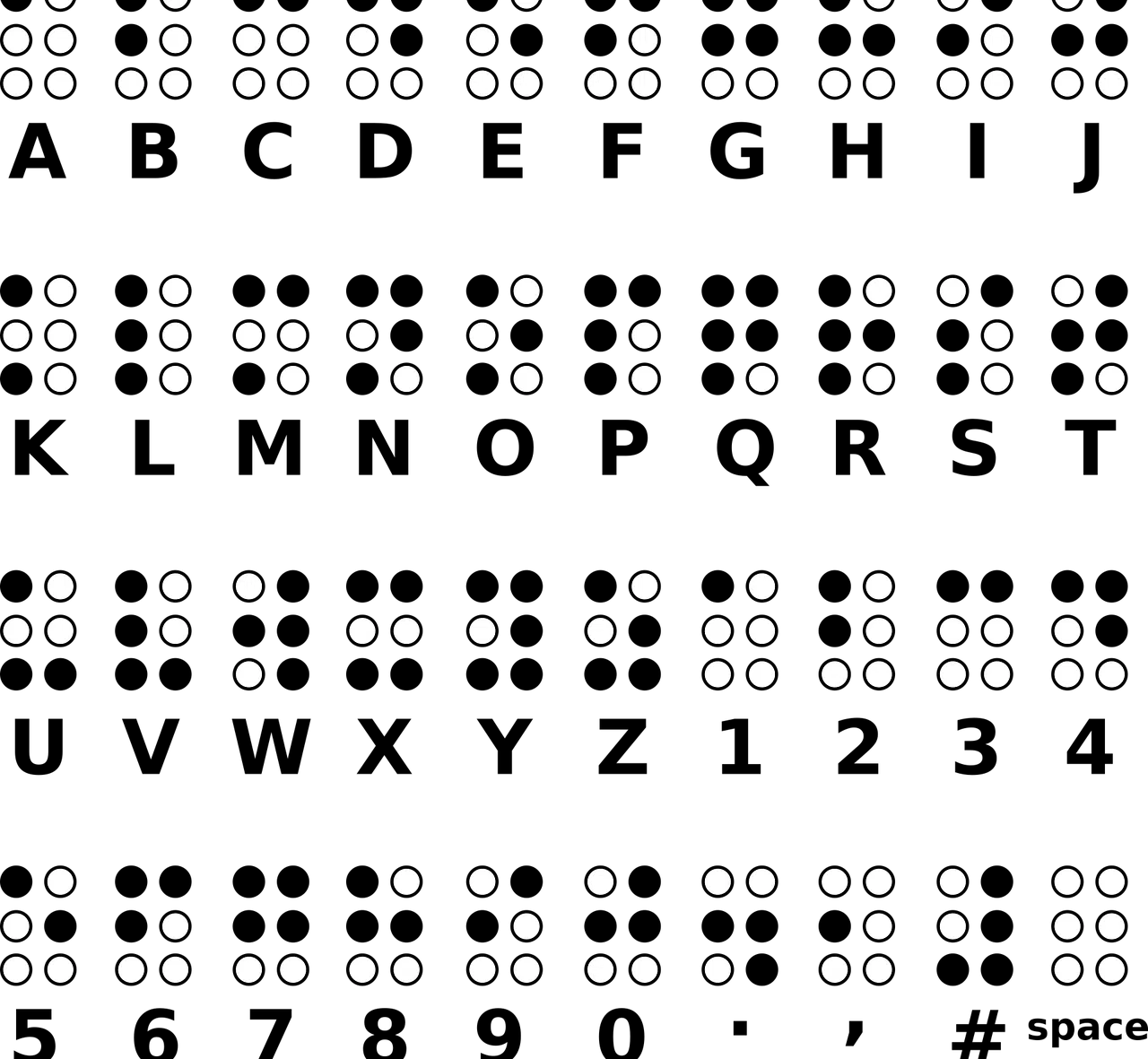
Braille is based on tactile perception.
Braille is a surname and also a common noun. In fact, what the noun designates is named in honor of the person who developed it.
The Frenchman Louis Braille ( 1809 – 1852 ) was an inventor and pedagogue who devised a writing and reading system for the blind. This method, based on relief drawings, is known as braille .
The history of the braille system
Before delving into the characteristics of the Braille system , it is necessary to focus on the figure of Charles Barbier de la Serre ( 1767 – 1841 ). This French soldier created a reading and writing code so that officers could read and write and transmit their positions without using light.
Barbier de la Serre 's code was structured around raised dots that could be "read" by passing the tips of the fingers over them. Louis Braille became aware of this system in his adolescence , when he attended the School for the Blind and Deaf in Paris .
Braille had lost his vision in his childhood. After studying the aforementioned code, he reformulated it to adapt it to the needs of all individuals with visual disabilities. After tests and changes, it came to shape the six-point system that is still used today, known as the Braille writing system .

Braille dots represent letters, numbers and other symbols.
Characteristics of the alphabet
It is important to keep in mind that Braille is an alphabet , not a language: that is why we also speak of the Braille alphabet . Using six-dot cells , organized in two columns and three rows, it is possible to represent letters, numbers, symbols and signs.
The coding is linked to whether the points are present or not. The six points make it possible to obtain 64 different combinations : depending on the absence or presence of the points in each of the positions , the letter in question is established.
The alternation of dots also serves to indicate numerical prefixes, punctuation marks and capital letters, for example. For the representation of particular or accented letters in different languages , the signs may differ.
It can be noted that braille allows tactile writing and tactile reading . Thanks to the embossing of the letters, the blind can communicate by capturing their messages on a medium.

Braille books make reading easier for the blind.
braille devices
Over the years, various machines and devices have been created that facilitate the production and interpretation of the signs of the Braille system. Braille devices can work physically or virtually to improve accessibility.
There are braille input and output devices. In the case of input devices, we can name braille keyboards , which have six or eight keys and are used to represent characters through the simultaneous pressing of certain keys.
A braille line , meanwhile, is used to output content in braille code from a cell phone (mobile) or a computer (computer). In this way, the blind individual can have easy access to the data.
Another technological element of great importance is the braille printer . Thanks to this product, images and texts can be printed with dots that are recorded on paper . They usually print six-dot braille, although there are devices that can print eight-dot braille.
The operating logic of the braille printer is similar to that of the laser or inkjet printer. The difference is that, for Braille printing, strikers are used to mark the sheets .
Currently there are Braille apps that allow you to learn the alphabet, read texts developed with the system or translate them. In this way, braille software is another inclusion tool.
The existence of ATMs with Braille, stairs with signage in Braille and menus in Braille, for example, favors the social integration of those who suffer from a visual disability, since it provides them with tools to function in the community.
Literacy
Braille literacy is very important as it contributes to equality and independence. For those who suffer from severe visual impairment , this is essential training to receive information and transmit it.
That is why braille teaching programs are so relevant. Just as literacy in people with visual disabilities is key, the teaching of Braille is also necessary in people without vision disorders because it expands the possibilities of interaction and helps build an inclusive community.
Braille courses are taught in public and private institutions. Likewise, there are options that promote self-learning, so training can be adapted to the needs of each individual.
It cannot be omitted to mention that, beyond the relevance of Braille, blind people must have other resources and supports so that they can fully develop, such as guide dogs, audiobooks, devices with voice recognition or computers with information technology. voice to text, for example.
